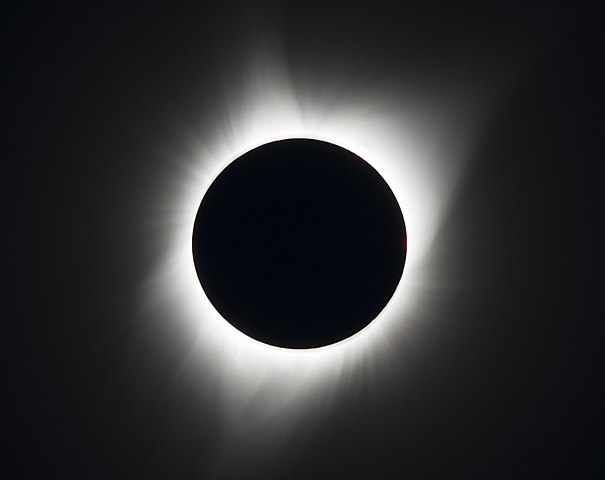A total solar eclipse will occur on 4th December which is the last solar eclipse of 2021.
In a total solar eclipse, the sun, moon and the earth align in a straight line as the moon passes between the sun and the earth. The moon’s shadow is casted on the earth surface on a certain region and people under the region of moon’s shadow can see it as an eclipse (the moon covering the sun).
How does the moon’s shadow form?
As the moon passes between the sun and the earth, the sunlight incidents on the front side of the moon’s surface thus creating a shadow on the other side. The shadow is of three types, they are umbra, penumbra and antumbra, basing on these shadows different types of eclipse occurs.
The darkest shadow of the moon is the umbra region, if this shadow is casted on the earth surface, then a total solar eclipse occurs.
There is a less darker shadow region around the dark shadow is known as penumbra, if this shadow is casted on the earth surface, then there will be a partial solar eclipse.
There is another shadow that is formed in front of the umbra region, that is known as antumbra. If this shadow is casted on the earth surface, then the moon cannot cover the moon but the moon appears like a disk leaving the edges of the sun which looks like a fire ring. This eclipse is known as annular eclipse or ring of fire eclipse.
What type of eclipse is occurring on 4th December?
It is a total solar eclipse, but everyone cannot see it as a total solar eclipse.
The people who are under the path of the umbra shadow region, that is the region under path of totality can witness this as a total eclipse. The people outside the umbra or path of the totality region will see a partial solar eclipse.
When and where to watch?
It is seen as a total solar eclipse across the Antarctic region and it is seen as a partial eclipse for the southernmost region of South America, Africa, and New Zealand.
Stages of Total solar eclipse:
First contact: Where the edge of the moon touches the edge of the sun, the beginning of partial eclipse.
Second contact: Where the moon covers the entire sun, a full eclipse begins.
Great Eclipse or Totality: Maximum phase of the eclipse where the sun is completely covered by the moon.
Third contact: When the moon starts uncovering the sun, the end of the full eclipse starts.
Fourth contact: When the moon stops covering the sun, the end of partial eclipse.
The total duration of the solar eclipse is 4 hrs 8 mins, and the totality( time for which the moon completely covers the sun) of the eclipse is 1 min 54 seconds.
Watch the video about total solar eclipse in Telugu
Best of Starry Stories
1. Read about the The Physics of Floating Ball
2. Read about the Did You Just Spot a Cheetah a Leopard and a Jaguar
3. Read about the Which is the Largest Delta in the World?
4. Read about the Chlorophyll and Haemoglobin – An Unlikely Connection
5. Read about the What is the True Colour of the Coronavirus?
6. Read about Why Do Fish Not Freeze in Cold Water?

